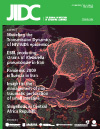Genetic characterization of ESBL producing strains of Klebsiella pneumoniae from Tehran hospitals
DOI:
https://doi.org/10.3855/jidc.1059Keywords:
Klebsiella pneumoniae, ESBL, PCR, PFGE, FIGE, IranAbstract
Introduction: This study was conducted to determine the genetic characterization of extended-spectrum beta-lactamase (ESBL) producing strains of Klebsiella pneumoniae isolated from Iranian patients in hospitals in Tehran.
Methodology: Antibiotic susceptibility of 104 isolates was determined using the disk diffusion test. The Minimum Inhibitory Concentrations (MICs) of imipenem and meropenem were determined for isolates showing reduced susceptibility to carbapenems. The phenotypic confirmatory test (PCT) was used to screen the isolates for ESBL production. PCR was used to detect blaSHV, blaTEM and blaCTX-M and the amplicons from selected clones were sequenced. Isolates producing ESBLs were analyzed by pulsed-field gel electrophoresis (PFGE).
Results: One isolate showed resistance to imipenem (MIC = 16 µg/ml). Resistance to amikacin and ciprofloxacin was 44.2% and 25.0%, respectively. ESBL production was detected in 72.1% (n = 75) of isolates. The prevalence of blaSHV, blaTEM and blaCTX-M genes among the isolates was 55.7% (n = 58), 30.7% (n = 32) and 45.2% (n = 47), respectively. The sequencing revealed the amplicons corresponding to bla (TEM-1, TEM-79, SHV-1, SHV-12, SHV-31, CTX-M-15) genes. While the blaCTX-M-15 is the dominant gene among the Iranian isolates, we detected the blaSHV-31 and blaTEM-79 genes for the first time in the country. PFGE differentiated the 71 ESBL-producing isolates into 62 different genotypes. Clonal dissemination of ESBLs was found in the neonatal intensive care unit and intensive care unit of one hospital.
Conclusion: The findings are evidence of the spread of multi-resistant clones of ESBL producers in Tehran hospitals.
Downloads
Published
How to Cite
Issue
Section
License
Authors who publish with this journal agree to the following terms:
- Authors retain copyright and grant the journal right of first publication with the work simultaneously licensed under a Creative Commons Attribution License that allows others to share the work with an acknowledgement of the work's authorship and initial publication in this journal.
- Authors are able to enter into separate, additional contractual arrangements for the non-exclusive distribution of the journal's published version of the work (e.g., post it to an institutional repository or publish it in a book), with an acknowledgement of its initial publication in this journal.
- Authors are permitted and encouraged to post their work online (e.g., in institutional repositories or on their website) prior to and during the submission process, as it can lead to productive exchanges, as well as earlier and greater citation of published work (See The Effect of Open Access).








